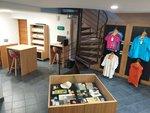Le Bocard trail
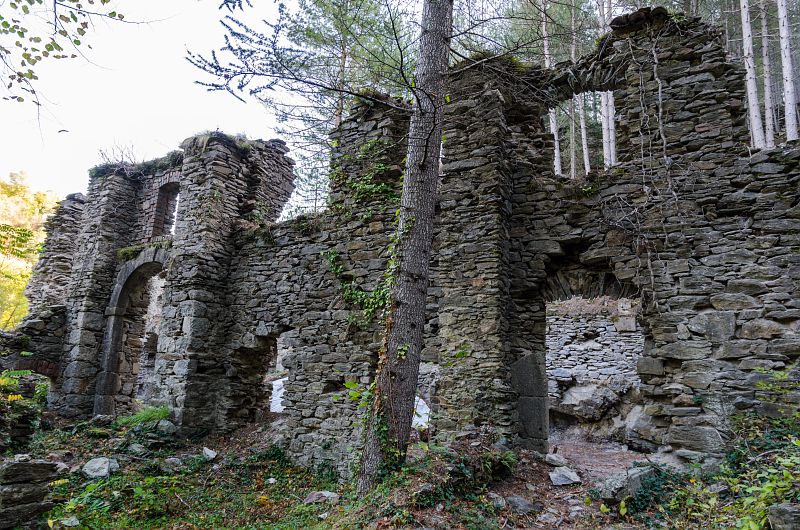
Vialas Discovery
Discovery
Le Bocard trail
Very easy
2h
2,5km
+98m
-101m
Loop
Embed this item to access it offline
On the banks of the Luech river sit the ruins of a factory consumed up by ivy – an astonishing sight. In the 19th century, this was where galena, a lead ore containing silver, was processed using deafening machinery. After being extracted from tunnels close by, the ore was sorted and processed on site. In 1847 Vialas produced one-quarter of France’s silver, and its output did not stop increasing until 1862, when it reached 1,930 kg of refined silver. Shut down in 1894, the factory has recently been rediscovered yet keeps some of its mystery intact.
10 points of interest
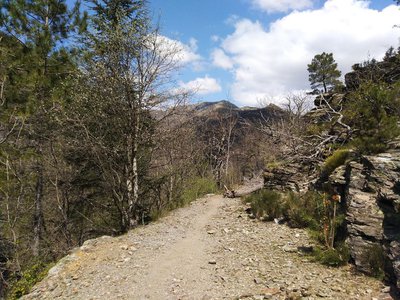
Sentier vers la mine - © E. Balaye  History
HistoryWe’re recruiting!
In the 19th century, miners had an advantage over farmers: they were paid their wages directly. Like other companies at the time, the factory in Vialas had developed paternalistic policies that led its staff to abandon farming and become proletarianised. At its height, in 1866, the factory had 522 employees spread over several sites. The company’s difficulties from the late 19th century onwards had demographic repercussions on the municipality, which lost almost 40% of its population in about 50 years, with most probably migrating to the mining basin of Alès.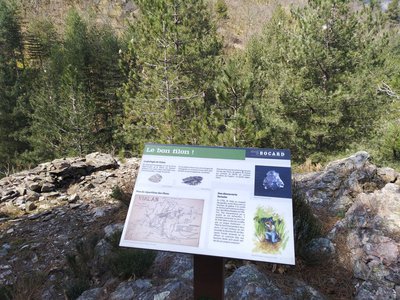
© E. Balaye  Geology
GeologyThe good filon
All rocks are minerals but some are considered ores because they contain a metal or precious substance. As soon as the mineral is mined for the metal it contains, it is called an ore. Galena is an ore found in seams; it contains lead. However, it was not lead that was mined in Vialas, but silver: when the seams formed, a substitution of atoms occurred which produced lead ore containing silver: argentiferous galena.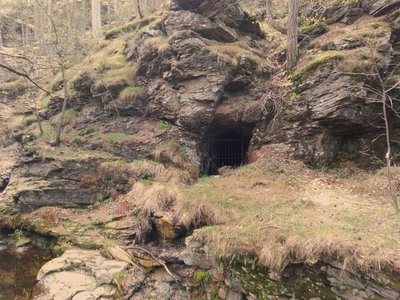
entrée de galerie - © E. Balaye  Know-how
Know-howLet’s start mining!
When the ore seams were discovered in 1781, nobody remembered any previous mining in Vialas. And yet, according to the mine director at the time, some tunnels showed signs of having been mined using fire. This technique, known since prehistory, consists of heating the rock face to make the rock shatter. This is supposedly why one of the seams is called “ancestors’ seam”. We do not have sufficient evidence today to determine definitively whether or not there was mining here before the 18th century.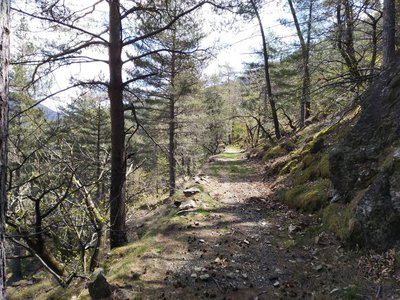
© E. Balaye  Know-how
Know-howThe pithead
At the exits of the mine’s main tunnels were several areas and corridors for sorting the ore, such as these.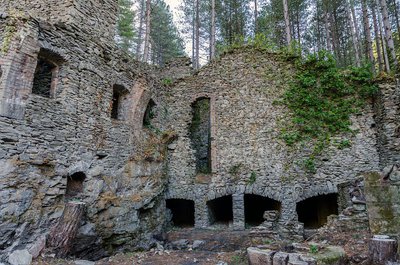
Fonderie - © Olivier Prohin  Architecture
ArchitectureHow the factory was organised
The factory is below you. It gained the name of Le Bocard from one of the particularly noisy machines which crushed the ore. Opposite you, many workshops for mechanical processing have been destroyed. These buildings also provided lodgings for staff on the first floor, and were arranged so as to take advantage of the water supply. Water was the main driving force of the factory’s machinery, which meant that periods of drought or frost were very disruptive.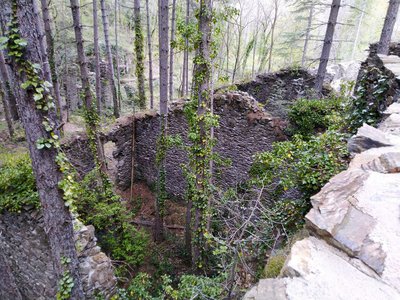
© E. Balaye  Know-how
Know-howMechanical processing
This operation removed as much sterile rock as possible, keeping only the rock richest in ore that was ready for smelting (called schlich). Several machines were used at various times to crush and then categorise the ore by size and density: the higher the ore content, the heavier the rock.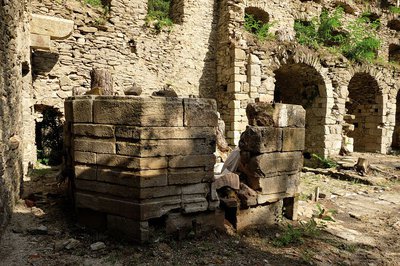
Fonderie - © Eddie Balaye  Know-how
Know-howGetting hot!
The foundry was established in 1827, before being modified and extended in 1860. The schlich arrived at the foundry for metallurgical processes, which were the final step to obtaining pure silver. First the metal – meaning the argentiferous lead – had to be separated from the galena. This was done by roasting and then smelting it in a reverbatory furnace. This produced lead containing silver, called lead bullion. The lead then had to be progressively separated from the silver it contained, using cupellation. In 1847, Vialas produced one-quarter of France’s silver.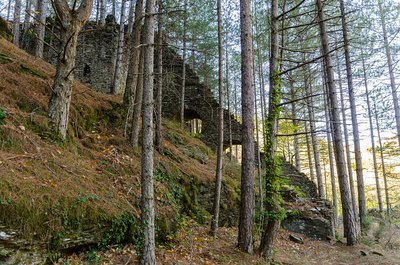
Cheminée de l'usine du bocard - © Olivier Prohin  Know-how
Know-howGoing up in smoke
Smoke was emitted as far as possible from the factory. But it contained lead and silver particles, which were collected using the sack-like filters that you can see in the corner of the stack, by the side of the path. These “sacks” trapped the silver and lead particles, which were heavier than the other components of the smoke. The silver was transported to Paris by stagecoach, the lead and other products by cart and then by train to Beaucaire.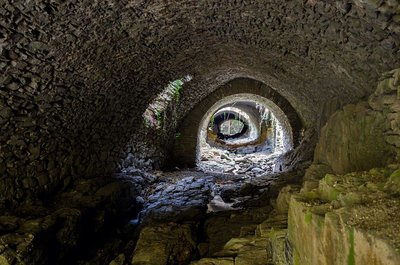
Voûte support de l'usine du Bocard - © Olivier Prohin  Architecture
ArchitectureCover everything !
There was not enough space available in the valley for the factory. To save space, the factory was given a vaulted ceiling, which created a flat area. Consisting of several sections and built from small slate blocks, the vault covers La Picadière brook for almost 100m. The brook was not used to drive the machines, its flow being too irregular. Instead, the Luech river was partly diverted to supply the factory.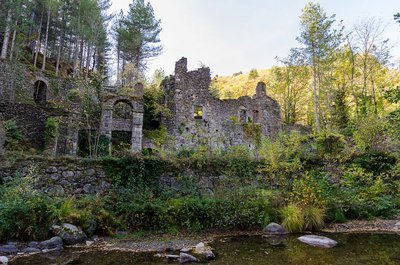
La mine au bois dormant - © Olivier Prohin  History
HistorySleeping Beauty mine
This is a green hollow and the literary inspiration for the first chapter of Jean-Pierre Chabrol’s novel La Gueuse, which is entitled “The Sleeping Beauty Mine”. The association Le Filon des Anciens maintains the site, cutting back brambles and revealing forgotten elements, such as the canal that used to carry the river water, which you will spot below the path by the factory. Regular maintenance of the site preserves this exceptional heritage and may uncover further elements.
Description
The trail stays on the tarred road for 400 metres, then takes a path to explore the world of mining. After you have turned back towards the factory, you pass through one of the vast arches of the stack and reach a viewpoint which gives you a perspective on the different stages of the transformation of the ore.
- Departure : Hamlet of La Planche (Vialas)
- Arrival : Hamlet of La Planche (Vialas)
- Towns crossed : Vialas
Forecast
Altimetric profile
Recommandations
For your security and to preserve the site, you must stay on the defined path. It is strictly forbidden to remove stones or other objects from this protected site, which is classed as a Historical Monument.
Information desks
Tourism'house and national parc, Génolhac
Place du Colombier, 30450 Génolhac
This office is part of the National Park's associated tourist-information network, whose mission is to provide information on, and raise awareness of, the sites and events as well as the rules that must be observed in the National Park's central zone.
Open from april to october
Office de tourisme Des Cévennes au mont Lozère
le Quai, 48220 Le Pont de Montvert sud mont-Lozère
Access and parking
From the village of Vialas, on the small road towards La Planche, col de Banette.
Parking :
Parking area 50m after the bridge of La Planche hamlet.
Calculateur d'itinéraire Lio
Utilisez le calculateur liO pour organiser votre trajet en région Occitanie.
Autres régions
Calculez votre itinéraire en Auvergne Rhône Alpes sur Oùra
Biodiversité autour de l'itinéraire
Source

Commune de Vialashttp://www.vialas-commune.fr

Parc national des Cévenneshttp://www.cevennes-parcnational.fr/
Report a problem or an error
If you have found an error on this page or if you have noticed any problems during your hike, please report them to us here:

